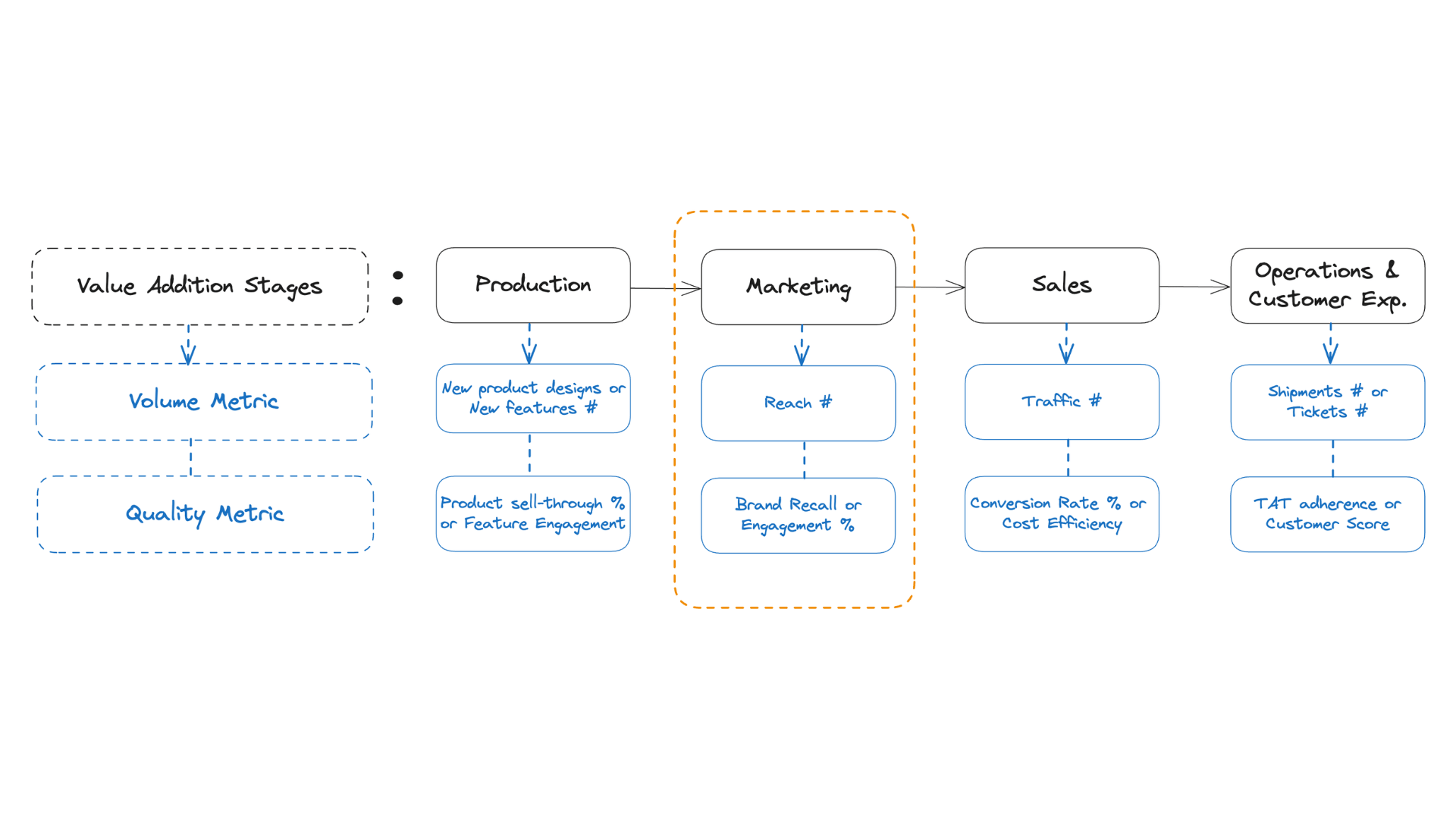What is the Metric Hierarchy for Marketing stage?
Marketing is the second stage of value addition. In marketing an online business, we focus on two primary goals: enhancing brand awareness and boosting online sales. To achieve these goals, it's essential to establish metric pairs that reflect and influence performance of a business in these areas.
'Number of Customers' and 'Return on Investment (ROI)' serve as top-level metrics for the sales objectives, while 'Reach' and 'Engagement Rate' might be employed for brand awareness.

Brand Awareness Metric Pair:
- Reach: Measures the total number of unique users exposed to the brand's marketing efforts, indicating the breadth of awareness.
- Engagement Rate: Reflects the depth of interaction between the audience and the brand's content, providing insights into how compelling and memorable the brand's messages are.
Top-Level Metric Pair for Sales:
- Number of Customers: Reflects the total count of customers making purchases, a direct indicator of market reach and sales success.
- Return on Investment (ROI): Measures the financial efficiency of marketing investments, comparing the gain from sales to the cost of marketing activities.
Breaking Down the Top Metrics into Hierarchy:
For the sales goal, further dissect 'Number of Customers' into 'Traffic' and 'Conversion Rate', providing insights into the effectiveness of the sales funnel. Similarly, dissect 'ROI' by analyzing both 'Marketing Spend' and 'Revenue from Sales' to gain a comprehensive financial perspective on marketing efficiency.
For brand awareness goal, analyze 'Reach' and 'Engagement Rate' to gauge how effectively the brand is capturing and holding the audience's attention.
Takeaway:
By establishing a clear metric hierarchy focused on both brand awareness and online sales, an online apparel store can systematically track and enhance its marketing performance.
This structured approach allows for comprehensive monitoring and targeted improvements in both reaching potential customers and converting them into actual buyers, ultimately contributing to the brand's growth and success.